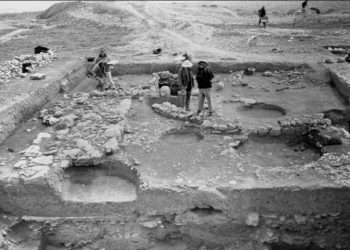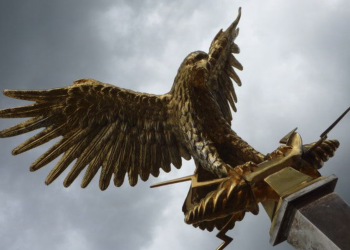The Great Sphinx at Giza is the largest single-stone monolith statue on the planet’s surface. Shrouded in mystery, despite having studied it for centuries, we’ve still not managed to solve its riddle. Nonetheless, the Great Sphinx is the biggest, the most impressive, the strangest, and most enigmatic. Countless legends, stories, and myths speak of hidden treasures, chambers, and rooms beneath the Sphinx and around the Pyramids. The monument stands guard, not only of the majestic pyramids behind it but of the many mysteries that engulf it. The riddle of the Sphinx is one that we shall perhaps never solve. Throughout its long history, the ancient monolithic statue has undergone dozens of restorations, the first of which existed in ancient Egyptian times, some 3,500 years ago, when Ramesses the Great ensured the Sphinx was restored to its former glory.
The Sphinx Now, the Sphinx Then
As one of the most marvelous statues anywhere in the world, it is fascinating to see what the Sphinx looked like in the distant past, before modern restorations, and before tourism took over. Although without the “refurbishments,” the monument would have been badly damaged by now, these may have directly influenced how the Sphinx is perceived today. Since there are no ancient texts or illustrations of the Sphinx dating back to when it was carved—supposedly 4,500 years ago during the reign of Khafre—we can’t possibly know what the Sphinx looked like originally.
Certain tell-tale signs can help us narrow down what it may have looked like, but knowing for sure is nearly impossible due to our limited understanding of the ancient monument. The same happens with the imposing pyramids standing a few meters behind the Sphinx. Although remnants of an ancient society, and despite their ancient age, their core remains standing to this date. Of course, knowing what the pyramids may have looked like in detail thousands of years ago is difficult, but we can make an educated guess. Many modern depictions of the pyramids illustrate the ancient monuments as being cased with highly-polished limestone blocks, covered with a pyramidion probably made of gold.

Rare video footage
Although we know very well what the pyramids look like today and what the Sphinx is like in modern times, video footage dating back a century is difficult to come by. Seeing images and videos of the Sphinx before many of its modern restorations may help us better understand what the original monument may have looked like when it was freshly carved and painted at the Giza Plateau. Only if we compare the images taken in the 1900s and photographs taken in the 2000s can we see the real difference between the Great Sphinx ‘back then’ and the Sphinx today. Some people would even argue the monument is seen in images dating back to the 1900s and the photographs of the Sphinx in the 2000s show an entirely different statue.
There are several extremely rare and vintage images of the Giza plateau where we can see the three main pyramids up-close and the Sphinx from angles we are not used to seeing the monument. Many of these images show the ancient guardian of the pyramids covered in sand, only partially excavated. This alludes to the possibility of many other structures in Egypt remaining under several meters of sand, entirely hidden from view. Although seeing images of these ancient structures is a fantastic experience, seeing a rare video of the Sphinx—filmed in 1897 —is even more. The video posted below is deemed the oldest surviving video footage of the Great Sphinx of Giza.
The video
Despite being one of the oldest and most impressive monuments on the planet’s surface, the Great Sphinx tightly holds onto its most precious secrets. Debate continues among academics who can’t seem to agree on the exact date when the Sphinx was carved, who commissioned it, and what its original purpose was. We know that the Great Sphinx of Giza was of great importance to the ancient Egyptians and was likely profoundly connected to the worship of the Sun. If the Sphinx is 4,500 years old, it means that until today, it has witnessed more than 1,600,000 sunrises.
Have something to add? Visit Curiosmos on Facebook. Join the discussion in our mobile Telegram group. Also, follow us on Google News











